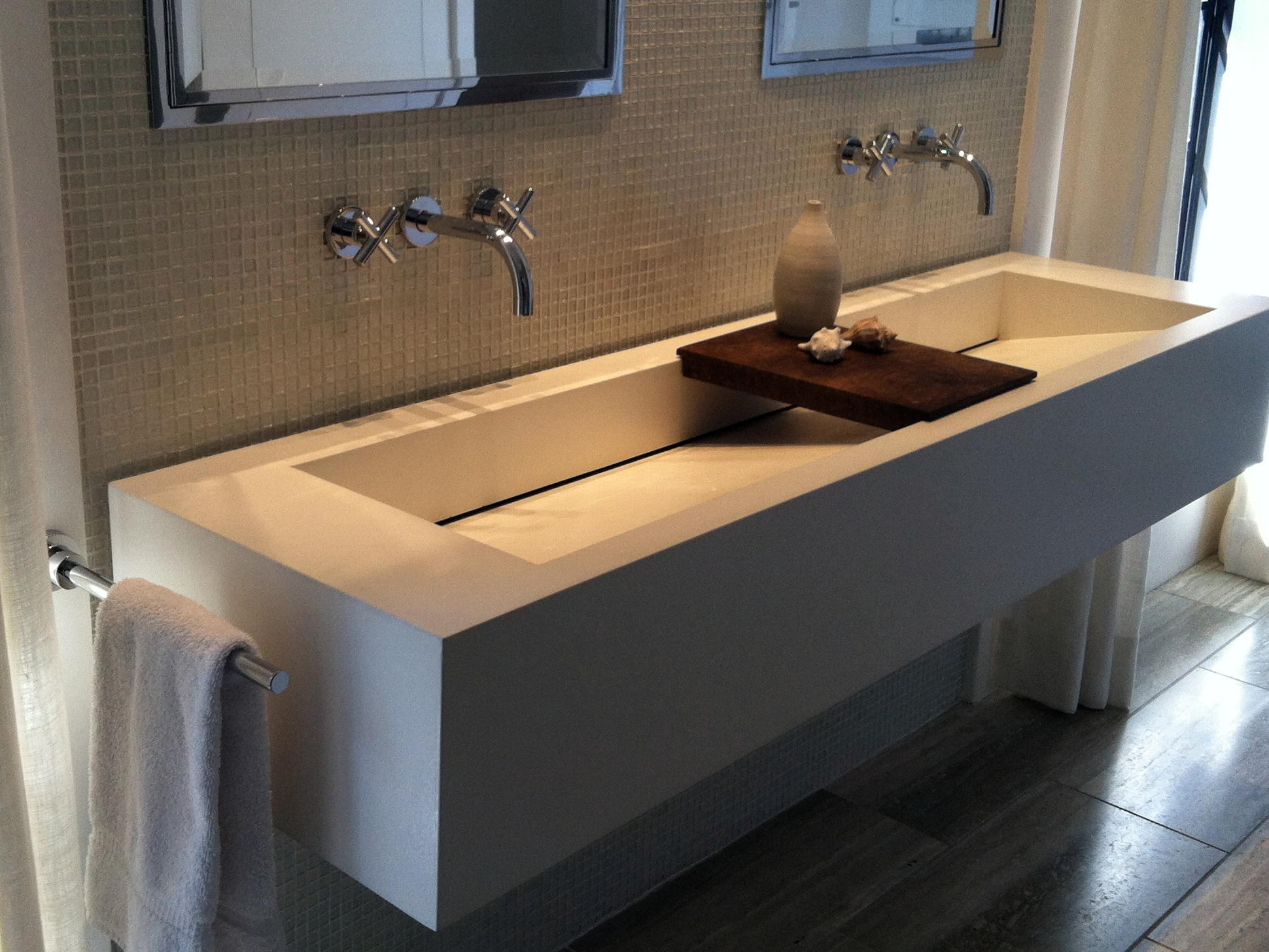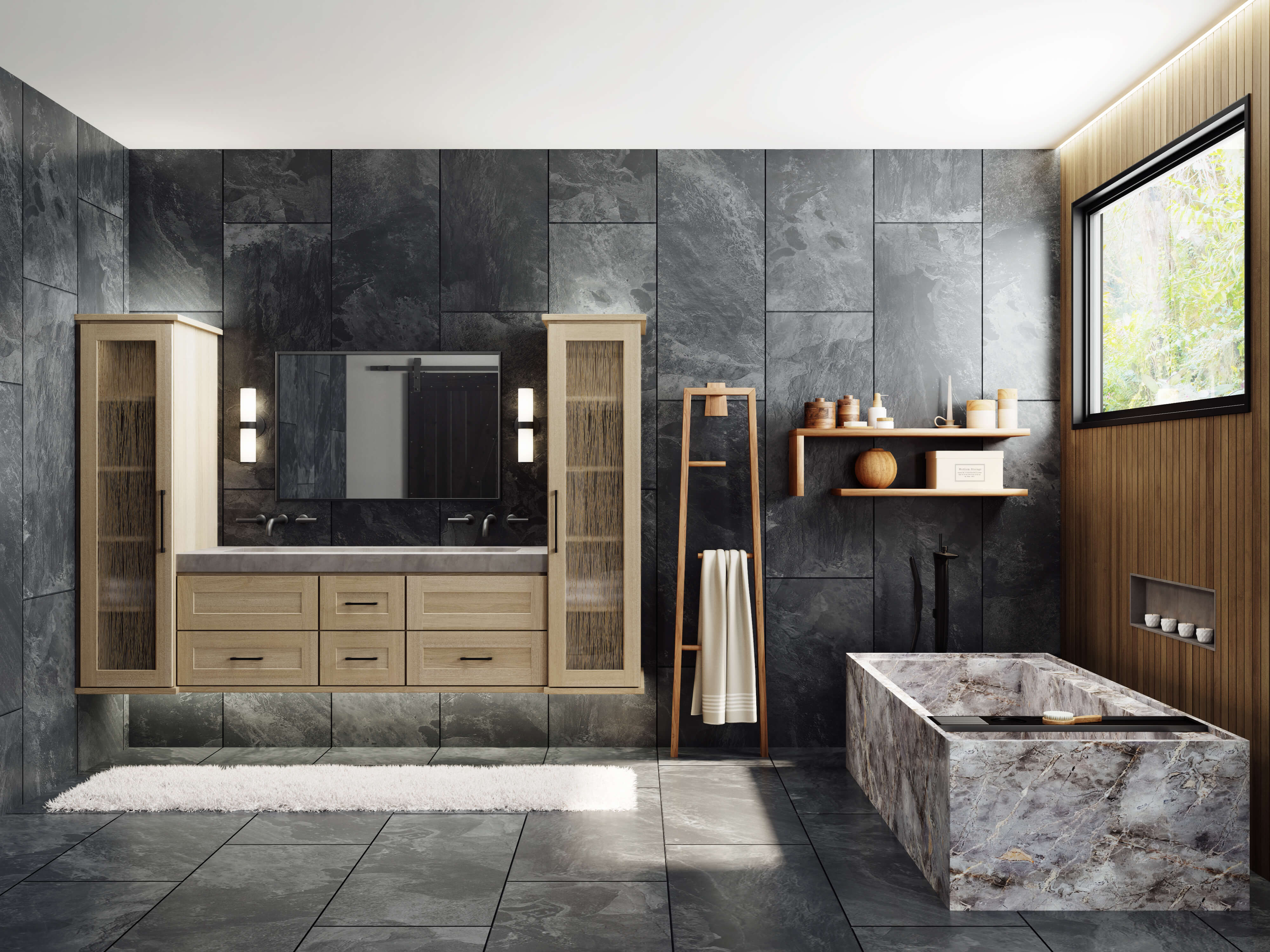Master Bathroom Vanity Styles: Master Bathroom Vanity Ideas

The vanity is the focal point of any bathroom, and choosing the right style is crucial to creating a cohesive and beautiful space. From traditional to modern, there are numerous vanity styles to consider, each offering unique features and aesthetics.
Modern Farmhouse Vanity Styles
The modern farmhouse aesthetic combines rustic charm with contemporary elements, creating a warm and inviting atmosphere. A modern farmhouse vanity typically features clean lines, simple details, and a mix of natural materials like wood and metal.
- Wood Species: Opt for reclaimed wood, weathered oak, or rustic barnwood to add character and authenticity to the vanity.
- Hardware: Choose black or oil-rubbed bronze hardware for a touch of industrial style.
- Countertop: A white quartz or marble countertop complements the rustic elements while maintaining a modern feel.
- Sink: A farmhouse sink with a deep basin is a classic addition to a modern farmhouse vanity.
Traditional, Contemporary, and Transitional Vanity Styles, Master bathroom vanity ideas
The three main vanity styles—traditional, contemporary, and transitional—differ in their design elements and overall aesthetic.
- Traditional: Traditional vanities are characterized by ornate details, elaborate carvings, and a classic, timeless appeal. They often feature warm wood tones, brass hardware, and a formal aesthetic.
- Contemporary: Contemporary vanities emphasize clean lines, minimalist details, and a sleek, modern look. They typically feature bold colors, geometric shapes, and innovative materials.
- Transitional: Transitional vanities bridge the gap between traditional and contemporary styles, combining classic elements with modern touches. They often feature simple lines, neutral colors, and a mix of materials.
Vanity Designs with Natural Elements
Incorporating natural elements like wood and stone into vanity designs adds warmth, texture, and a sense of grounding to the bathroom space.
- Wood: A wood vanity with a natural finish showcases the beauty of the grain and creates a warm and inviting ambiance.
- Stone: A stone countertop, such as granite, marble, or limestone, adds elegance and durability to the vanity.
- Mixed Materials: Combining wood and stone creates a visually appealing and texturally rich vanity.
Vanity Functionality and Features

A well-designed vanity goes beyond aesthetics, encompassing functionality and features that enhance the bathroom experience. From durable countertops to efficient storage solutions, thoughtful choices ensure a practical and enjoyable space.
Countertop Materials
Countertop materials play a crucial role in the vanity’s durability, maintenance, and aesthetic appeal. Here’s a comparison of popular options:
| Material | Durability | Maintenance | Cost |
|---|---|---|---|
| Granite | Highly durable, resistant to scratches and heat | Requires sealing to prevent staining, regular cleaning | High |
| Quartz | Durable, non-porous, scratch and stain resistant | Easy to clean, requires minimal maintenance | Moderate to high |
| Marble | Elegant, but prone to scratches and etching | Requires sealing and regular cleaning, susceptible to stains | High |
Double Vanities for Larger Bathrooms
Double vanities are ideal for larger bathrooms, offering separate spaces for multiple users. They enhance functionality by providing ample counter space and storage, promoting convenience and organization.
Double vanities are particularly beneficial for couples or families, ensuring everyone has their own dedicated space.
Built-in Storage Solutions
A well-designed vanity incorporates various storage solutions to maximize space and keep the bathroom tidy.
Drawers, shelves, and cabinets offer versatile storage options for toiletries, towels, and other bathroom essentials.
- Drawers: Ideal for storing smaller items, providing easy access and organization.
- Shelves: Offer open storage for frequently used items, allowing for visual organization.
- Cabinets: Provide ample enclosed storage for larger items, maintaining a clutter-free environment.
Master Bathroom Vanity Lighting

Proper lighting in a master bathroom vanity area is crucial for creating a functional and aesthetically pleasing space. It plays a significant role in enhancing the overall experience, making daily routines easier, and highlighting the beauty of the bathroom design.
Importance of Proper Lighting
Adequate lighting in the vanity area is essential for several reasons. It ensures visibility for tasks like applying makeup, shaving, and brushing teeth. It also creates a welcoming and relaxing ambiance, enhancing the overall aesthetic appeal of the bathroom. Poor lighting, on the other hand, can lead to eye strain, fatigue, and even accidents.
Types of Vanity Lighting
There are several types of vanity lighting fixtures that can create a warm and inviting ambiance. Here are some examples:
- Sconces: These wall-mounted fixtures provide a soft, diffused light that can be placed on either side of the mirror, creating a balanced and symmetrical look. Sconces come in various styles, from traditional to modern, allowing for customization to match the bathroom’s overall design.
- Pendant Lights: These hanging fixtures can be placed above the mirror, offering a focused and bright light source. Pendant lights are often chosen for their stylish and contemporary designs, adding a touch of sophistication to the vanity area.
- Vanity Strip Lights: These lights are typically installed underneath the vanity cabinet, providing a soft, ambient glow that illuminates the countertop and surrounding area. They are a great option for creating a warm and inviting atmosphere.
- Mirror Lights: These lights are integrated into the mirror frame, offering a direct and focused light source that illuminates the face. They are particularly useful for tasks requiring precision, such as applying makeup.
Benefits of Combining Lighting Types
Using a combination of ambient, task, and accent lighting can create a truly exceptional and functional vanity area.
- Ambient Lighting: This provides a general, overall illumination for the bathroom. It can be achieved using overhead fixtures, such as recessed lights or chandeliers, or by incorporating natural light through windows. Ambient lighting sets the mood and creates a sense of space.
- Task Lighting: This focused light source is essential for performing tasks like applying makeup or shaving. It should be positioned directly in front of the mirror, providing bright and even illumination. Task lighting can be achieved using vanity strip lights, sconces, or mirror lights.
- Accent Lighting: This type of lighting is used to highlight specific features or objects in the bathroom. It can be achieved using spotlights, track lights, or even decorative lamps. Accent lighting adds depth and dimension to the space, creating a visually appealing and interesting atmosphere.
